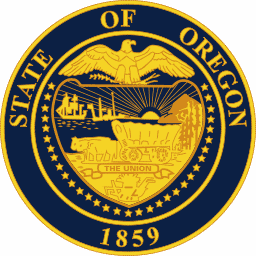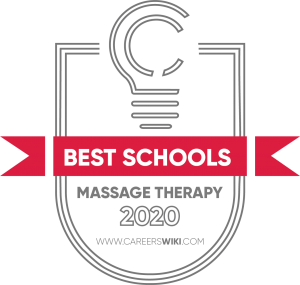…
There are six massage therapy schools in Oregon. They include private institutes, public colleges, and a private university. Among the locations are Portland, Salem, Bend, and Grants Pass.
Certificate programs take a year or less to complete, while associate degree curricula last about two years. Instruction features lecture classes, lab sessions, and real-world clinical experience.
This is an outstanding place to be a massage therapist. Oregon practitioners earn significantly higher salaries and wages than the national average. Government officials are predicting 450 annual job openings in the state during the decade ending in 2026.
View schools and programs in other states.

This government agency regulates and monitors the practice of massage in Oregon. The board establishes licensure requirements, administers tests for prospective practitioners, issues licenses, and enforces professional conduct and practice standards.
The panel investigates complaints concerning unlicensed practice or alleged violations of rules and ethics. The officials discipline licensees, applicants, and facilities. Actions include “letters of concern,” reprimands, civil penalties, continuing education requirements, licensure denial, probation, suspension or revocation of licenses, and assessment of administrative costs.
The board has seven members, four of whom are licensed Oregon massage therapists. The other three represent the public.
The first accomplishment to become a massage therapist in Oregon is to obtain either a high school diploma or a GED. A student then needs to enroll in an accredited postsecondary school offering an MT program that state officials have approved.
The Oregon Board of Massage Therapists mandates that curricula provide at least 624 clock hours of instruction and training. This amounts to 25 quarter credits or 15.74 semester credits. There must be 200 hours (eight quarter credits or 5.34 semester credits) in health sciences courses that cover anatomy and physiology, pathology, and kinesiology.
Another 300 hours (12 quarter credits or eight semester credits) need to be devoted to massage theory and practical application, clinical practice, business development, sanitation, communication, and ethics.
The remaining 125 hours (five quarter credits or 2.4 semester credits) may be within any of the required subject areas. Programs vary in the types of massage techniques and other therapeutic methods they teach.
Upon graduation, a prospective practitioner must pass either the Massage and Bodywork Licensing Examination (MBLEx) or the Certification Examination for Structural Integration (CESI). Students usually choose the MBLEx, the test most states require.
They apply online to the Federation of State Massage Therapy Boards, paying a fee of about $200; and take the exam at a Pearson VUE testing center.
Students also must pass the Oregon jurisprudence exam, a written test about Oregon laws that they may take at home and send to the state board.
Practitioners are required to complete 25 hours of continuing education each time they renew their licenses. The board maintains a list of acceptable class subjects.
We selected the schools below based on the programs that they offer, accreditation, student population, graduation rate and reputation.
View our Ranking Methodology to learn more about how we rank schools.

N/A
297
A private school in Portland, EWCHA boasts an MT program that the prestigious Commission on Massage Therapy Accreditation recognizes.
The 800-clock-hour curriculum involves four 12-week terms, which take one year (full time) or 15 months (part time). Morning, afternoon, and evening/weekend schedules are available. Students learn various massage methods, as well as hydrotherapy and myofascial techniques. Elective classes include Craniosacral Therapy, Tha Massage, Spa Therapies, and Chinese Massage.
Programs start in January, April, July, and October. The student-to-teacher ratio in massage classes averages 14:1. The school provides continuing education courses and workshops.
N/A
1076
Another great choice is this private, nonprofit institution established in 1904. The school’s MT program, on campuses in Portland and Salem, is recognized by the Commission on Massage Therapy Accreditation.
The part-time program offers variable schedules of up to 18 hours per week. Students learn Swedish, deep tissue, sports/orthopedics/rehabilitation, and medical massage techniques. They have full access to the university’s award-winning anatomical sciences building and library. The student-to-teacher ratio in hands-on classes is 13:1.
Graduates may apply the certificate to an associate in applied science degree at Chemeketa Community College.
100%
28
This private institute in Bend offers a 740-clock-hour MT certificate program that takes seven months of day classes to complete.
The curriculum provides 230 hours of state-required science courses; and 104 hours of professional development and health classes such as Communications & Ethics, Career Success, Nutrition for Health, and Self-Care.
Students spend 406 hours in massage and related subjects. The courses are
Swedish Foundations, Soft Tissue Techniques, Introduction to Assessment & Treatment, Introduction to Myofascia, Introduction to Interactive Body Balancing, Integrating Techniques, and Hydrotherapy & Spa Techniques. A clinical practicum and community service round out the program.
68%
234
Founded in 1967, Carrington operates in eight Western states — including a campus on the third floor of Portland’s Lloyd Center.
Graduates of the massage therapy program receive certificates of achievement. The curriculum is composed of 660 clock hours (35 credit hours), which entails about nine months of study. The coursework covers the subjects that state officials mandate, as well as Swedish, sports, deep tissue, and chair massage methods. Students also learn Shiatsu.
The program concludes with an online career development seminar and an externship. Career services include job-searching strategies, resume writing, and interviewing techniques.
12%
4842
This public school in Grants Pass offers two massage therapy certificates.
The three-semester, entry-level program and the four-semester, one-year program feature classes in College Reading, Composition or Academic Literacy, Hydrotherapy and Massage for Cancer Patients, Myofascial Release, and Craniosacral Therapy. Students learn Swedish, Asian, sports, prenatal/infant/child, trigger point, and deep tissue massage techniques.
Prerequisite courses are College Success and Survival, and a pre-algebra or other math class. Students in the one-year program also must take a psychology or human relations course, as well as Expository Writing. A placement test determines whether additional general education classes are necessary.
21%
4872
Massage therapy students at this public school in Bend may pursue a certificate of completion or an associate in applied science degree.
The 830-clock-hour certificate program provides the mandated coursework plus classes in Rhetoric/Critical Thinking or Academic Composition, Managing a Massage Practice, Hydrotherapy, English Composition, and Pre-Algebra. The AAS program, available in the day or evening, also requires math and communications courses as well as Executive Office Decisions, Applied Accounting, and Computer Concepts.
Prerequisites are Introduction to Massage Career, Movement for Massage, Spirit of Massage, and Aromatherapy I. The faculty has more than 150 years of teaching experience.
$30
$62,800
23%
The middle range of Oregon practitioners make an annual salary of about $62,800 or an hourly wage of around $30.20. That is much better than the national median of over $41,400 a year or about $20 per hour.
The top 10 percent of the state’s massage therapists receive more than $95,500 or about $46, less than around $78,300 or $37.65 nationally. The bottom 10 percent get almost $34,000 or about $16.30 in Oregon, and more than $21,300 or about $10.25 nationally.
This state had 3,290 massage therapists in 2016. The federal Bureau of Labor Statistics foresees 4,060 positions by 2026. That would be a job-growth rate of 23 percent, similar to the projected 26 percent nationwide.
Sources: U.S. Bureau of Labor Statistics, CareerOneStop

LIMITED TIME DEAL